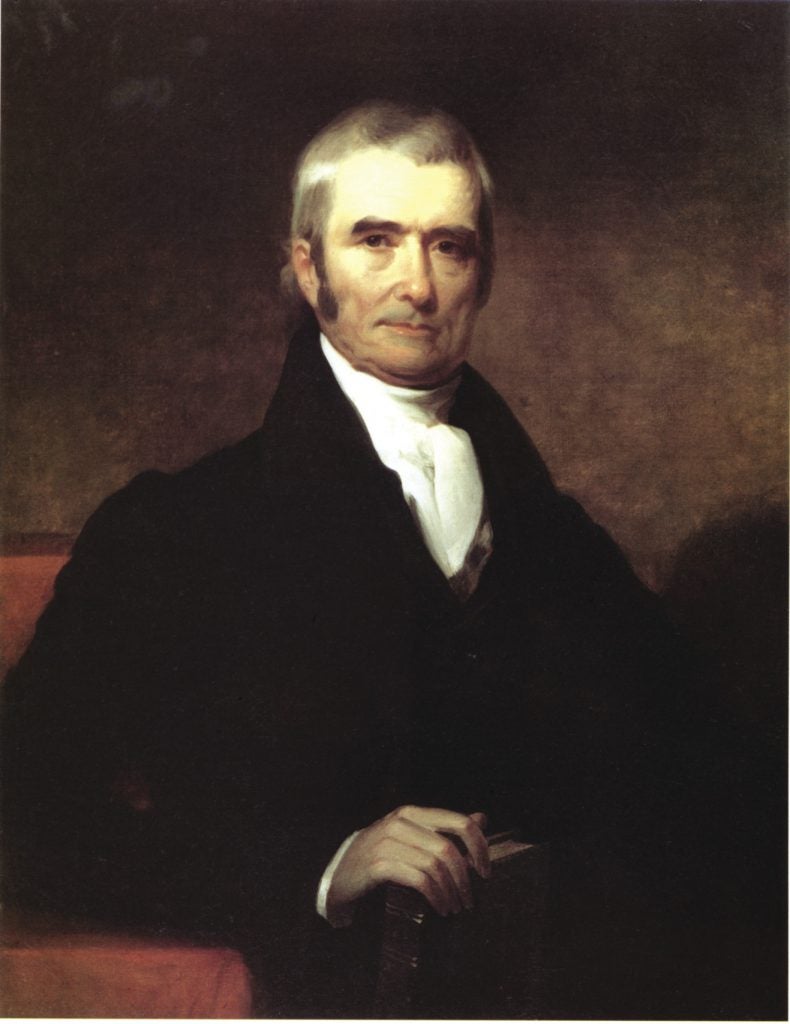 How university officials continue to honor the life and legacy of Chief Justice John Marshall
How university officials continue to honor the life and legacy of Chief Justice John Marshall
John Marshall, the chief justice of the United States, dominated the Virginia Constitutional Convention of 1829-1830, making a deep and lasting impression on his fellow convention delegates.
One of those delegates was John Laidley, a lawyer from Cabell County. Laidley returned home and in 1837 was one of the founders of a small school that he successfully urged to be named Marshall Academy in honor of the great chief justice. Over the decades, Marshall Academy would evolve into today’s Marshall University.
Like the school that carries his name, John Marshall was born in a log cabin on the Virginia frontier. At age 20, he fought in the Revolutionary War, spending the frigid winter of 1777-1778 with George Washington and the American troops encamped at Valley Forge. After the war, he established a highly successful law practice in Richmond and by 1790 had become the leading appellate lawyer in Virginia.
Marshall was elected to Congress in 1799 and appointed secretary of state in 1800. The following year, President John Adams named him chief justice. He would occupy that post for 34 years, handing down a series of historic opinions that defined the role of the Constitution, the Supreme Court and the nation.
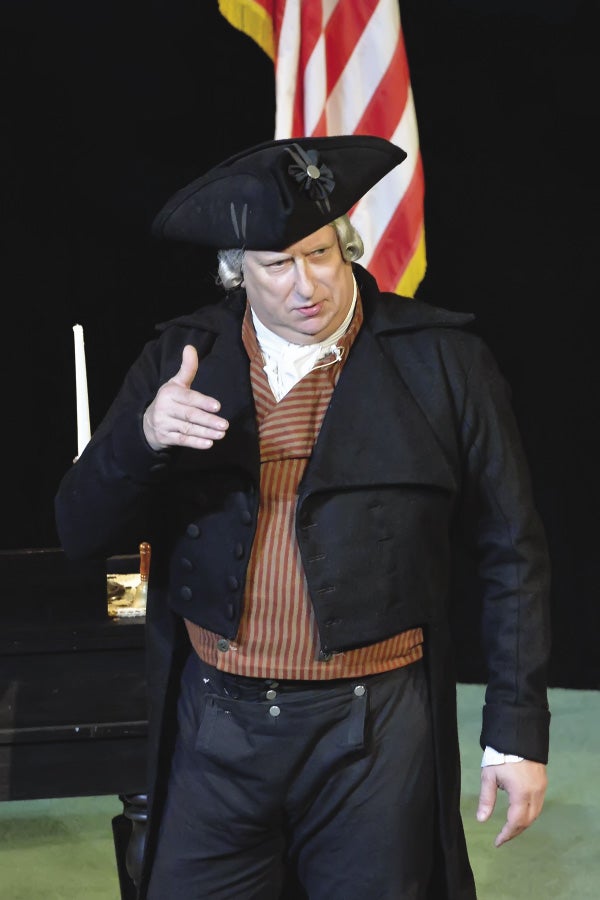 The famed jurist died in 1835, two years before the founding of Marshall Academy, thus he never knew the school had been named for him.
The famed jurist died in 1835, two years before the founding of Marshall Academy, thus he never knew the school had been named for him.
“I’ve read a great deal about John Marshall and think he would be extremely honored to have our university named after him,” said Marshall’s President Jerry Gilbert. “When I speak to prospective students who visit our campus, I tell them John Marshall is right up there with the Founding Fathers. He played a significant role in the development of our legal system and helped define the U.S. Constitution. He stood for protecting individual rights and for interpreting the U.S. Constitution so everyone could benefit from the rights and privileges outlined in it. He stood for justice and respect. I have a profound respect and fondness for John Marshall. I think his legacy is significant and I want the university to be associated with him and his career.”
A highly visible symbol of the university’s respect for its namesake is an eight-foot bronze statue of Marshall that stands outside the John Deaver Drinko Library facing John Marshall Drive. Created by noted American sculptor William Behrends of Tryon, North Carolina, the giant statue was unveiled in 1998.
The desire to erect a life-size statue of John Marshall on campus became a reality with the construction of the Drinko Library. A plaza or commons area was envisioned adjacent to the library and its construction offered a clear opportunity to erect a statue which would enhance the profile of the university’s namesake on campus.
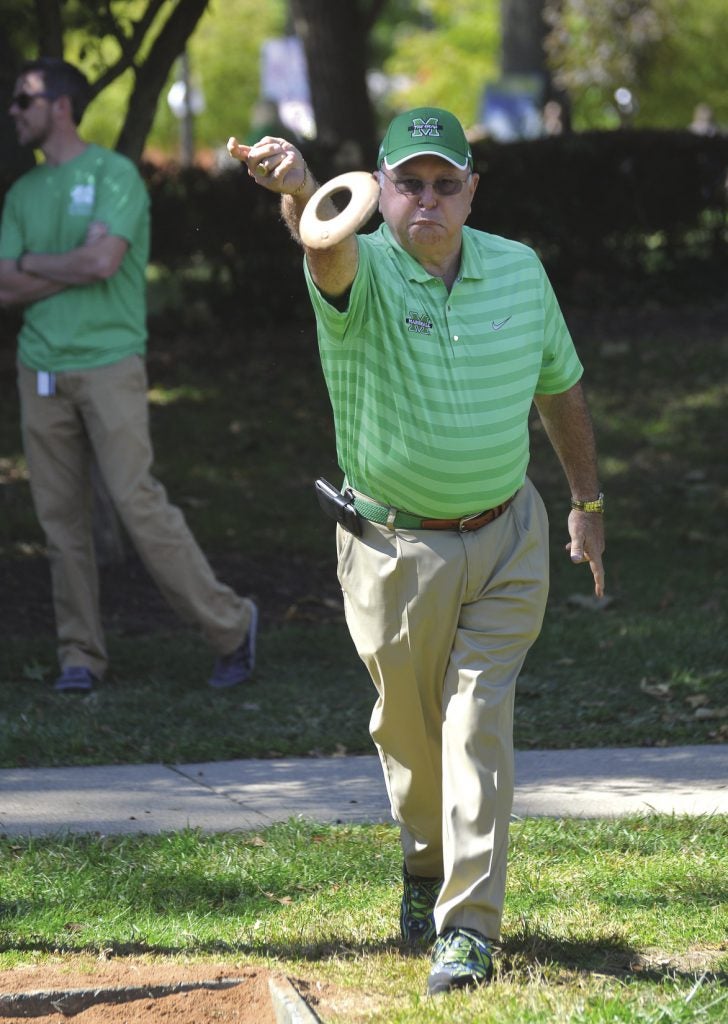 The statue portrays the chief justice in his judicial robes, stepping forward. The book held in the left hand symbolizes his early education at home on the Virginia frontier. The six-foot base is engraved with the words “Revolutionary soldier. Definer of the Constitution. Devoted husband and father.”
The statue portrays the chief justice in his judicial robes, stepping forward. The book held in the left hand symbolizes his early education at home on the Virginia frontier. The six-foot base is engraved with the words “Revolutionary soldier. Definer of the Constitution. Devoted husband and father.”
In 2001, the university commemorated the 200th anniversary of the inauguration of Marshall as chief justice by sponsoring “The Face of Justice,” an exhibition at the Huntington Museum of Art. The exhibit included 20 portraits of Marshall, along with various objects and artifacts from his life.
The school also produced an hour-long documentary on the chief justice, “John Marshall: Citizen, Statesman, Jurist,” which aired on West Virginia Public Television and was made available to the state’s schools and public libraries. Distribution of the documentary was made possible by a grant from Mary and Churchill Hodges.
In 2004, Sen. Robert C. Byrd sponsored legislation that designated Sept. 17, the date of the signing of the Constitution in 1787, as Constitution Day. In shepherding the measure to enactment, Sen. Byrd said it was his hope that Americans, especially the nation’s young people, would be prompted to acquaint themselves with the Constitution and study its importance.
“Sen. Byrd’s action inspired us here at Marshall to inaugurate our own celebration,” said Dr. Alan Gould, director of the John Deaver Drinko Academy for American Political Institutions and Civic Culture, which sponsors the yearly event.
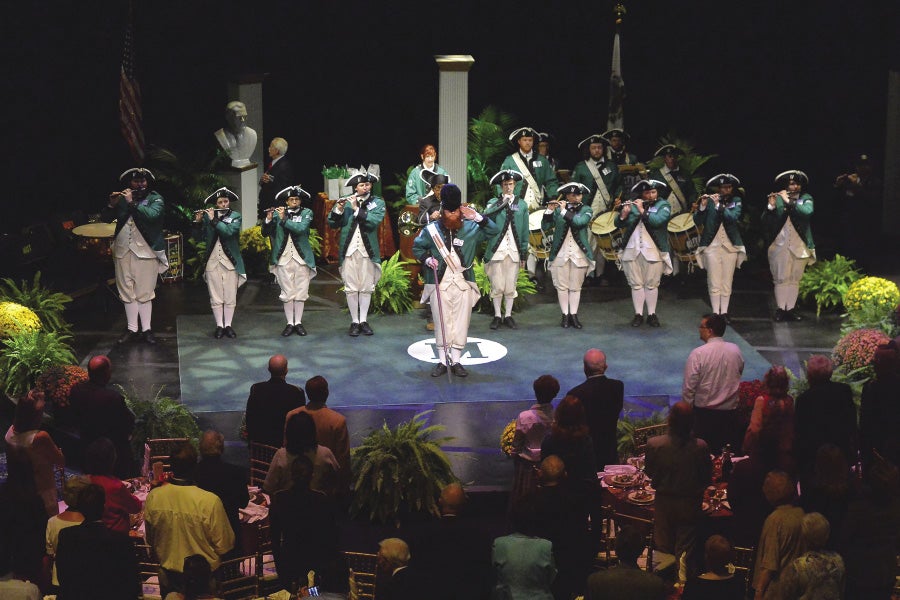 While Constitution Week at Marshall has a serious purpose, it also has a fun side — the annual President’s Invitational Quoits Tournaments.
While Constitution Week at Marshall has a serious purpose, it also has a fun side — the annual President’s Invitational Quoits Tournaments.
“There was more to John Marshall than the tremendously important decisions he made,” Gould said. “There was a fun side to him. There was a human side to him.” And quoits, the predecessor to horseshoes, was his favorite game. Quoits are rings of iron that, like horseshoes, are pitched at stakes in the center of square pits filled with red clay.
Gould said John Marshall would have a quoits festival once a month during the spring and summer in Richmond.
“He was the chief educator,” Gould said. “He was the one that made the decision as to who was closest to the peg. They said on many occasions you could find him down in the dust, the chief justice of the United States, with a straw measuring which person was closest to the peg.”
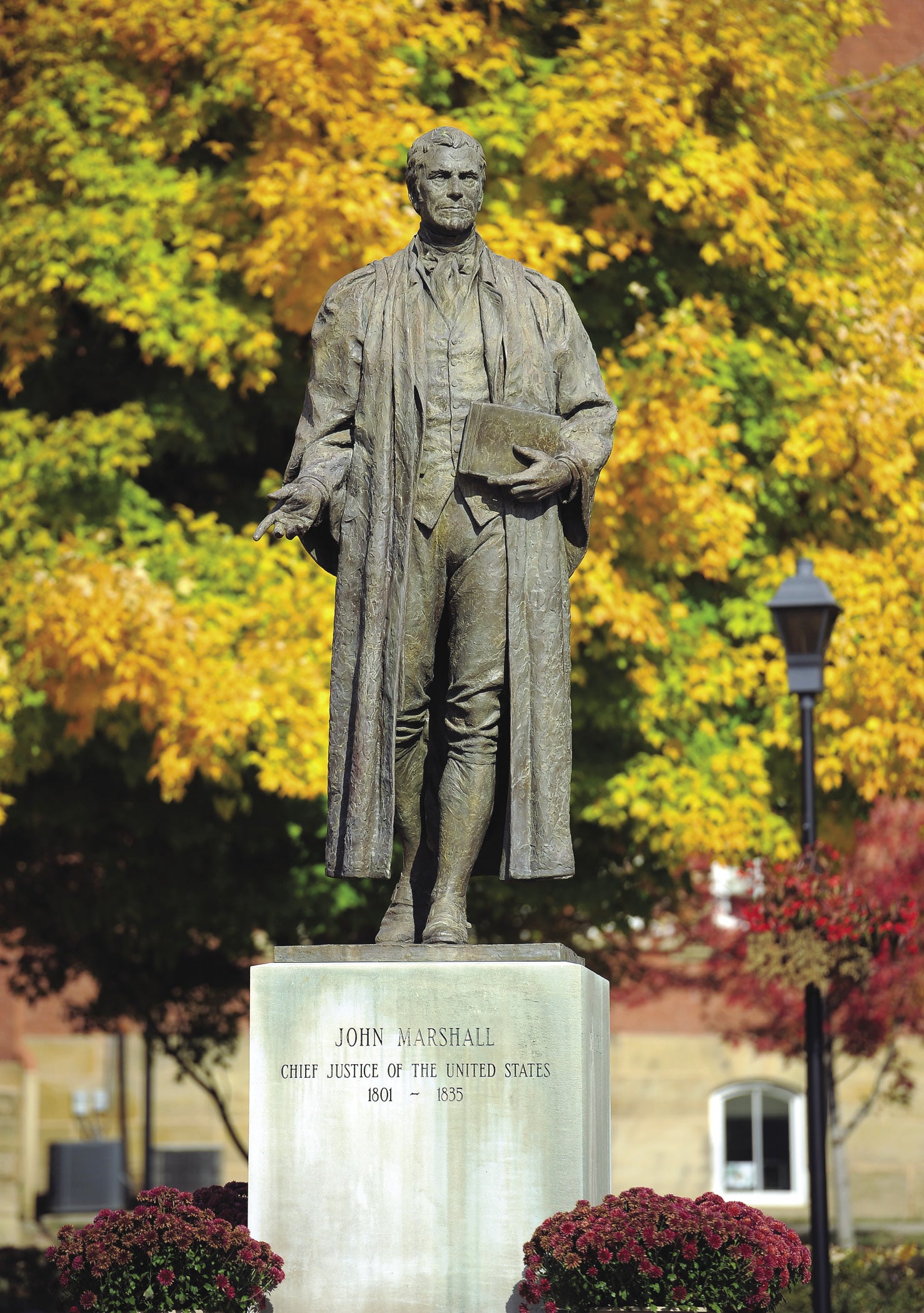 Gould said it’s important to realize that our leaders, including the Founding Fathers, were human.
Gould said it’s important to realize that our leaders, including the Founding Fathers, were human.
“If we put our leaders on pedestals and venerate them, oftentimes we feel that we can never obtain that,” he said. “It’s important to understand that yes, they were great people, but they had to overcome human frailties just like anybody else. It’s important, particularly for young people, to know that he would fit in right here, right now and be ready to play quoits.”
In another tribute to the chief justice, the university has organized the John Marshall Fife and Drum Corps, a project originally envisioned by Dr. Wendell Dobbs and his wife, Linda. They approached Dr. Gould, and he coordinated a fundraising effort to make the corps a reality.
“Dr. Gould immediately recognized the potential of such an organization for both our students and the institution,” Dobbs said. “And then Judy Ketchum and Lena Shell provided the resources to make it happen. Without their belief in our work, this worthy project simply wouldn’t have happened.”
The uniformed musical group is patterned after the Old Guard Fife and Drum Corps in Washington, D.C. Members of the corps are students and teachers in the Marshall Department of Music. They wear replicas of Revolutionary War uniforms and perform tunes that would have been heard in John Marshall’s day.
Dobbs said the corps’ music and image “reaffirms Marshall University’s link with the era and spirit of Chief Justice Marshall.”
President Gilbert said the Marshall University Creed similarly underscores the positive qualities exhibited by John Marshall: “Shortly after I arrived at Marshall, I came across the Marshall University Creed in the student handbook. It really spoke to me. I like what it says about defining the Marshall community and striving to reflect the good and admirable qualities of our fourth chief justice. The creed says that we are an educational community, an open community, a civil community, a responsible community, a well community, an ethical community, a pluralistic community, a socially conscious community and a judicious community. These are characteristics that we can be proud of as an institution of higher learning.”
James E. Casto is the retired associate editor of The Herald-Dispatch and the author of a number of books on local and regional history.
Photos: (From top) During his time as chief justice, John Marshall made a number of decisions that set the course for the Constitution, the Supreme Court and the country. Constitution Week at Marshall includes a number of activities, including a visit from a John Marshall re-enactor. The John Marshall Fife and Drum Corps is a musical group made up of students and faculty of Marshall’s music department who perform in replica Revolutionary War uniforms and encapsulate the era of the chief justice. Former Interim President Gary White participates in a quoits tournament during the 2015 Constitution Week. Quoits was John Marshall’s favorite game. One of the main campus’ most notable fixtures is the eight-foot, bronze John Marshall Statue found facing John Marshall Drive between Old Main and John Deaver Drinko Library.
 How university officials continue to honor the life and legacy of Chief Justice John Marshall
How university officials continue to honor the life and legacy of Chief Justice John Marshall